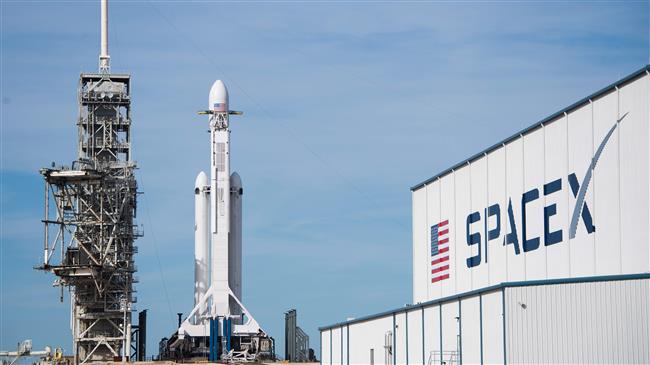5 things we should know about space projects of Elon Musk’s SpaceX
SpaceX chief executive Elon Musk plans to send his own Tesla roadster into space aboard the world’s most powerful rocket in operation, the Falcon Heavy, to the tune of David Bowie's “Space Oddity.”

Here is a look at some of the other far-out space projects that Musk has cooked up in recent years, as private American aerospace manufacturer and space transport services company is poised for the first test launch on Tuesday of its Falcon Heavy, which aims to become the world's most powerful rocket in operation, capable of ferrying people to the Moon or Mars some day.

Reusable rockets
To bring down the cost of spaceflight and boost efficiency, a key goal for Musk is to make rockets as reusable as commercial airplanes, that is, eliminating the current industry practice of tossing the multi-million dollar components after each launch.
After some early crashes and near-misses that prompted SpaceX to showcase them in a blooper reel, the company has now perfected the art of firing the booster's engines, maneuvering the grid fins and neatly landing the tall portion of the rockets upright on solid ground and on ocean platforms.
Musk is not the only one to have done it -- competitor Blue Origin, a rocket company run by Amazon chief Jeff Bezos, has also managed to land its own rockets in a similar fashion.
But no one has done it so many times. SpaceX has landed 21 of its Falcon 9 boosters so far.
Colonizing Mars
Musk wants to make humans an “interplanetary species” by establishing a colony of people living on the Mars.
Riding on reusable rockets and spaceships -- still under development -- people could travel 100 at a time to the Red Planet.
The idea is to bring up to a million people to Mars in the next century. Test flights could start in the next decade.
The cost to develop the rocket and spacecraft is estimated at $10 billion.

'BFR'
SpaceX is calling the rocket that would carry all these people to Mars “BFR,” which Musk has jokingly -- or not -- referred to as code for “Big F… Rocket.”
According to Spacenews.com, its formal name is now understood to be “Big Falcon Rocket.”
The idea is to have one booster and ship that replaces three of SpaceX's signature projects: the Falcon Heavy which aims to be the world's most powerful rocket for now, and may one day ferry supplies to Mars; the versatile Falcon 9 rocket, which can land seamlessly back on Earth post-launch; and the Dragon cargo ship which supplies the International Space Station.
The BFR is designed to stand 106 meters (about 350 feet) tall, with 10.8 million pounds of thrust, far more than the Saturn V moon rocket at 7.9 million pounds of thrust.
The first tests could come as early 2019, with orbital tests in 2020.
The first cargo shipments could make it to Mars in 2022, SpaceX has said.
Rockets on Earth
New York to Shanghai via rocket in 39 minutes? It's all part of Musk's vision for rocket travel on Earth.
The BFR will be the vehicle, Musk has vowed, to fly to most places on Earth in under 30 minutes and anywhere in under an hour.
The cost per seat would be about the same as an airplane economy fare, he said.

Cargo and crew to space
It seems like old news now, but SpaceX made history in 2010 by becoming the first private company to send its own spaceship to orbit and recover it.
In 2012, SpaceX broke barriers again, sending its Dragon cargo ship to the orbiting International Space Station.
That same year, SpaceX began regular cargo missions to supply the astronauts living in space with its gumdrop-shaped Dragon cargo ship, launched atop the Falcon 9 rocket, under a $1.6 billion contract with NASA.
Orbital ATK also sends its unmanned Cygnus cargo carrier to the ISS under a $1.9 billion deal with NASA.
SpaceX's Dragon is the only ship that can be returned to Earth intact. The Cygnus burns up on re-entry to Earth's atmosphere.
SpaceX is developing a crew Dragon vehicle that will be able to transport several astronauts at a time to the space lab. Its first manned flight could come later this year.
(Source: AFP)
Israeli airstrike kills at least 7 people in Rafah
VIDEO | Iranians hold nationwide demos in support of IRGC
Syria condemns US veto of Palestine UN membership resolution
Iraqi resistance forces hit Israeli Ovda air base
Hackers break into Israeli military’s computers, access trove of documents
Tulkarm Brigade commander killed by Israeli forces in raid on refugee camp
Zionist media desperately trying to turn Israeli defeat into victory: Iran
VIDEO | Press TV's news headlines











 This makes it easy to access the Press TV website
This makes it easy to access the Press TV website